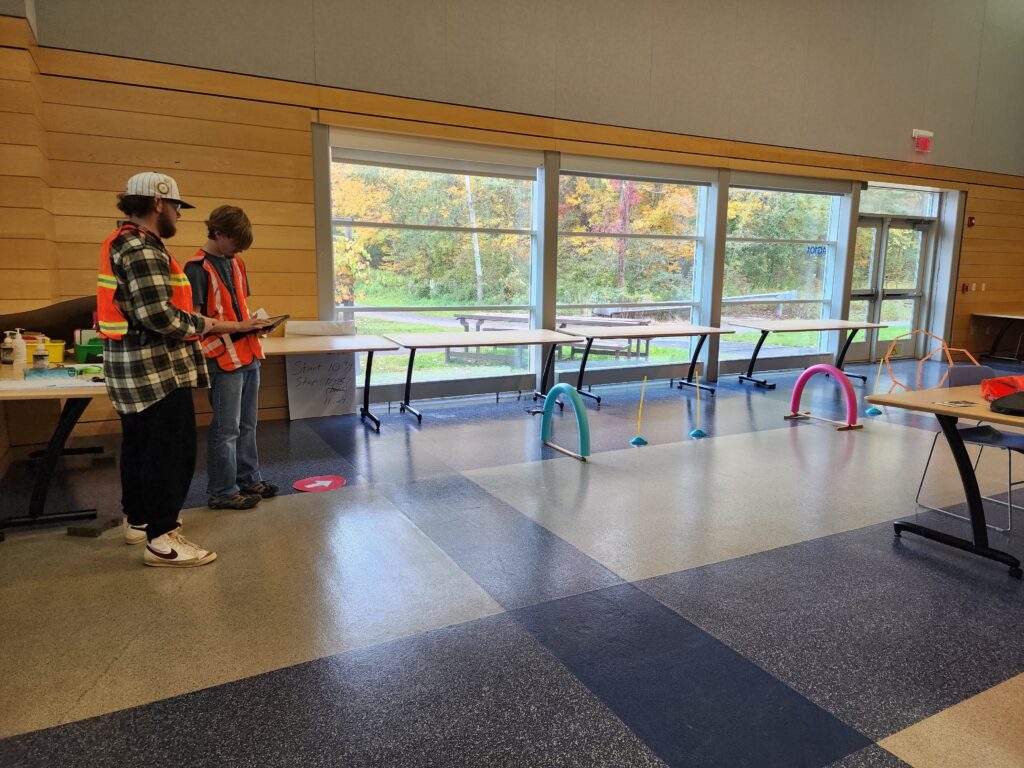This Is How We Do It…
This sequential photo montage highlights all the phases involved in preparing a site for the construction of a new building.
- The undeveloped, overgrown site in Hamden, CT at commencement of survey work.
- Site conditions during field work with survey gear. As we often do, our crew contends with towering, tangling vegetation.
- A year later, after site design and the permitting process, the finished plan set is delivered to the town permitting agency.
- The site is cleared and prepared for construction.
- The crew and survey instrument are in position to locate and mark 384 points for Helical Pile installation. (These piles, or piers, are used to stabilize soil to support the building foundation).
- The pier stakeout is complete and the site is ready for the pile driving crew to commence work. Each location is identified by the pink whisker flag and orange numerical identifier.
Once the piers are installed the foundation will be marked out for construction.
Stay tuned for updates as we follow this project to completion!








